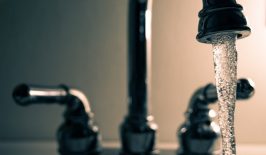A Spanish company’s technology is making jeans more sustainable by eliminating the usage of chemicals in the process, saving water and energy.
One of the most purchased and worn pieces of clothing in the world, comfortable, durable and increasingly acceptable for all kinds of occasions: jeans are a basic for almost everyone. But manufacturing denim means using huge amounts of water and to achieve a classic vintage look, lots of manual labour, test runs and toxic dyes.
While some major clothing companies have tried to reduce their water footprint by reducing the amount of water used in the cotton lifecycle, the process of finishing the jeans – and giving them a particular look – still posed a challenge. Until now.
A startup from Spain has developed a technology and a three-step process that can create the classic faded jeans look – without using toxic chemicals, using dramatically less water, and automatising the process.
So, how does it work?
Jeanologia’s technology allows the design of the jeans to be sketched out on a computer and drawn directly onto the fabric using a laser. This makes it possible to produce all kinds of different dyed, sanded and ripped effects, without manually adding toxic chemicals like bleach and potassium permanganate. And while it speeds up the process, it also makes it healthier and safer for the company’s employees too.
“A process that used to take hours and was done by people with very harmful procedures for their health, by the use of chemical compounds such as potassium permanganate, is now done in seconds with our laser technology,”
said Enrique Silla, founder of Jeanologia to El Pais, one of Spain’s major newspapers.
Afterwards, there’s a process called “ozone washing”, which gives the fabric a bleached, distressed look, but in an eco-friendly, non-polluting way (without the use of bleach or water!). In it, ozone gas is injected into a tumbler which contains the jeans. This naturally ages the denim, which naturally fades on contact, as if it were being bleached by the sun. The ozone gas is then re-mixed with atmospheric components to become oxygen again, before being released into the air.
The last step is to soften up the jeans and stop shrinkage. This is done using so-called nano bubble technology, in a process Jeanologia has named “e-flow”. In the process, air from the atmosphere is fed into an electro flow reactor and undergoes an electromechanical shock. This creates the nano bubbles, along with a flow of wet air. That mix is then fed into a tumbler containing the denim, and when it comes into contact it with the fabric it produces a soft and natural feel.
The result is a huge water saving. According to their official website, Jeanologia’s technology helped to contribute to a saving of around 8 million cubic meters of water in 2017.
And according to the Spanish newspaper ABC, more than 35 per cent of the jeans produced worldwide, around 5000 million yearly, are currently produced using Jeanologia’s technology.
One of the companies that is using the Spanish firm’s lasers is Levi Strauss. The well-known Californian company announced recently that, having been testing the Spanish technology for the last three years, they are officially going to be using this technique to produce their jeans, aiming to have it fully implemented by 2020.
According to Levis, by replacing manual labour with the laser machines, the numbers of steps involved in the finishing process has dropped from around 20 to just three, and they are able to finish a pair of jeans every 90 seconds, whereas previously it took an hour to finish two to three pairs. While this streamlined production also means reduced waste and less energy and resources used, it also results in an even faster fashion cycle – something which doesn’t always go hand in hand with sustainability.
Check out the video below to see how Levi Strauss is implementing the process:






